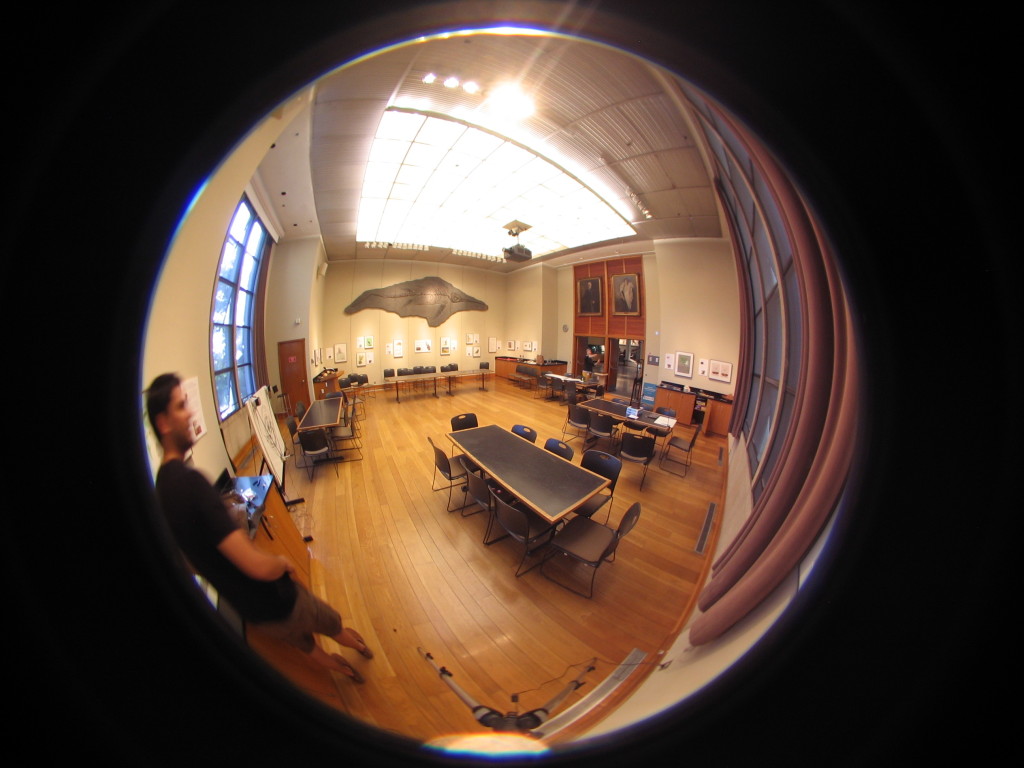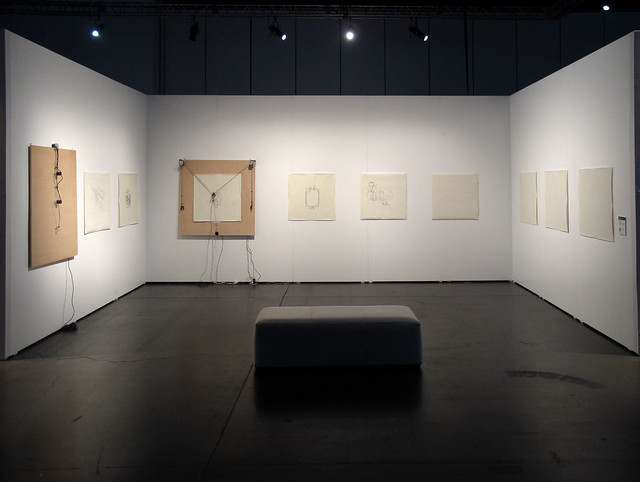I’ve helped organize an event at the Burke Museum on October 4th, The Big Draw, which will feature my Convex Mirror drawing machine as well as a number of NeoLucidas. Come by the Museum and draw; by hand, with the neolucida, or check out the drawing machine.
Category Archives: Drawings
Drawing Machine
Convex Mirror
he set himself / With great art to copy all that he saw in the glass.
-John Ashbery Self-Portrait in a Convex Mirror
Resuming Parmigianino’s project of self-portraiture in our contemporary era, this project uses a CNC plotter, 180º circular fisheye lens, and custom software to record a layered image of place. Substituting computer vision and precision automation for the human eye and hand, this project operates at a physical precision and temporal duration beyond what is humanly possible. Laboring over a three-month period it produced a series of 6 site-specific drawings documenting the Amazon campus in downtown Seattle.
Searle’s Room
This project is a response to John Searle’s Chinese Room. It explores child-writing and child-speech as protolanguages, unintelligible in any conventional linguistic sense but rife with poetic possibilities and communicative in other registers, on the level of shared biological and developmental experience. The system is composed of a number of static materials and two active agents: a child speech synthesis system, and a mechatronic child drawing apparatus. The system operates in cycles: synthesizing child speech, which is then interpreted and transcribed by speech recognition system, in turn launching the drawing machine into a round of additions to a cumulative drawing on the wall. As the cycle repeats, periodic bursts of child speech are followed by the sounds of stepper motors and pen-and-ink inscription.
Children’s voices were sourced from an online speech research database, and videos of children babbling and learning speaking their color words. Child drawings were gathered from a range of sources demonstrating different levels of representational and typographic development. My eye and hand were the means of data entry for the children’s drawings: I traced them into the system using the recording apparatus at left. This produced position-time series of pen motions which were broken apart and re-synthesized as the source data for the system’s machine drawings.
Chautauqua
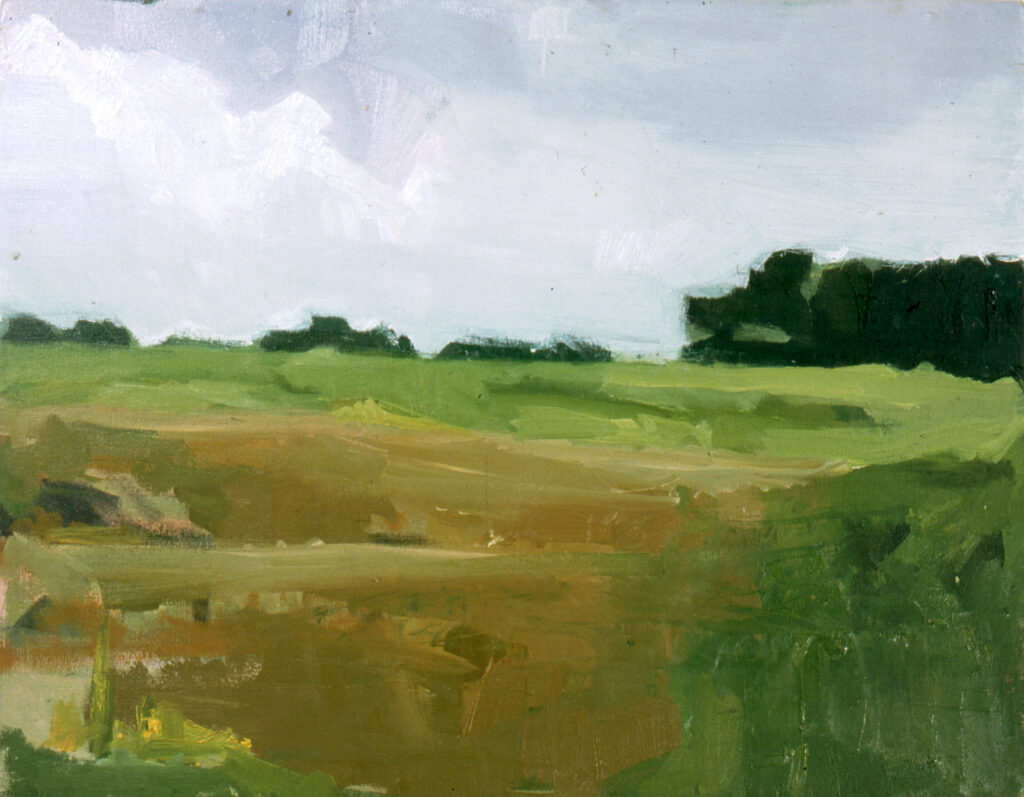
Paintings and drawings from a summer program at the Chautauqua Institute. Chautauqua, NY. 2001.
Continue reading Chautauqua
Anatomical Suite
This series of drawings examines systems that are points of degradation and probable failure-mechanical, aesthetic, neurological-of my body through age. Exhibited at Heavy Weight (2009) at The Body Firm, in Pasadena, CA. Curated by Sara Hunsucker.
Drawing Machine (simple)
The drawing machine plots images, reducing the practice of drawing to the gesture of tracing and inscription, without body, awareness, expressivity. It is the latest in a series of projects that have successively eliminated perception, expressivity, and now manual labor from drawing to see what remains. Continue reading Drawing Machine (simple)
Burlington, VT – 2001-2002
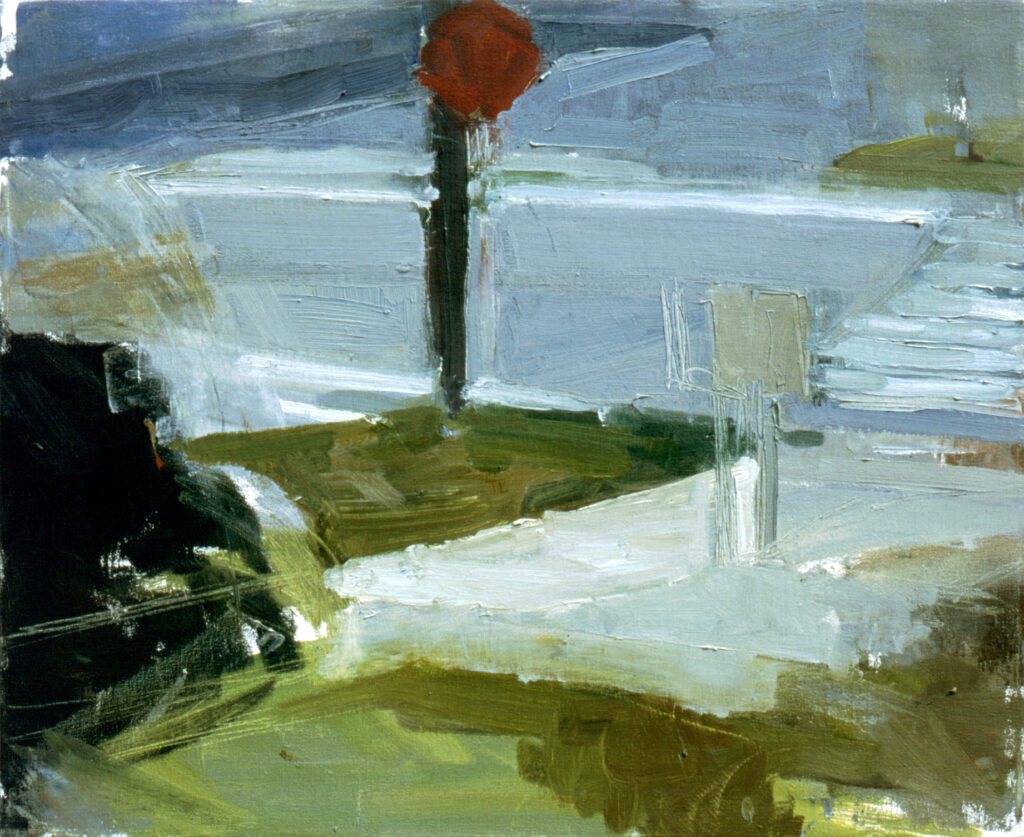
Fall 2001 – Spring 2002. Post-undergrad, pre-Washington D.C.
Continue reading Burlington, VT – 2001-2002
Anatomical Drawings – 2009
For Heavy Weight, 2009, at The Body Firm, in Pasadena, CA. The systems examined in this series are the points of degradation and (probable) failure–mechanical and neurological–of my body through age.
Human Factors in Computing Systems
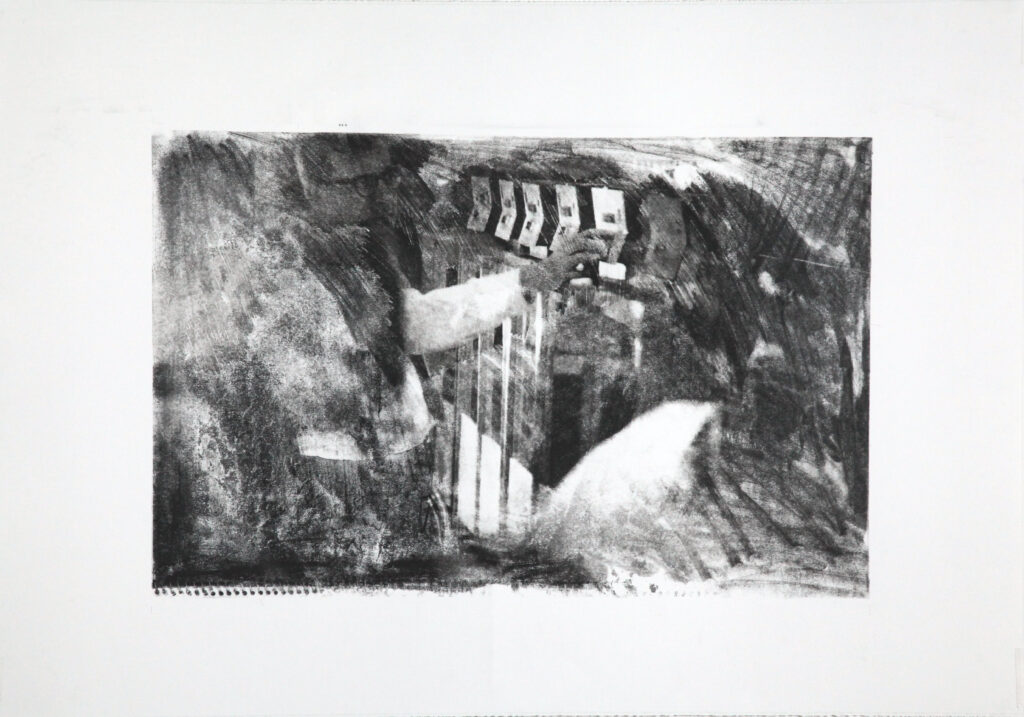
A series of xerox transfers, Human Factors in Computing Systems focuses on a particular kind of historical, institutional gaze: that of early corporate and academic computing centers engaged in their initial processes of self-representation and identity formation. The images here are drawn from corporate marketing brochures and documentary photographs from the dawn of the computing age, selecting images that situated people in the computer spaces, and depict inter-personal exchanges between multiple workers. Series of 5 images. Each image is 30 x 44”, solvent transfer on rag paper.
Shown at And The World Is Ours at Compact Space, February-March 2010.
Continue reading Human Factors in Computing Systems